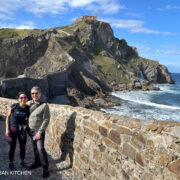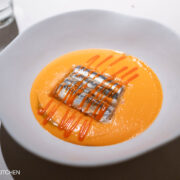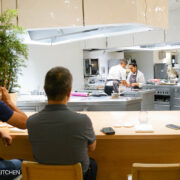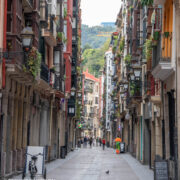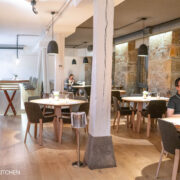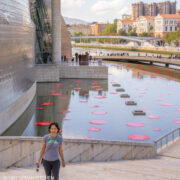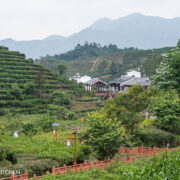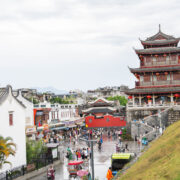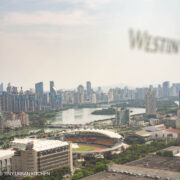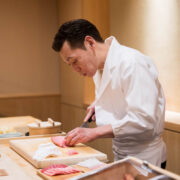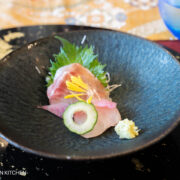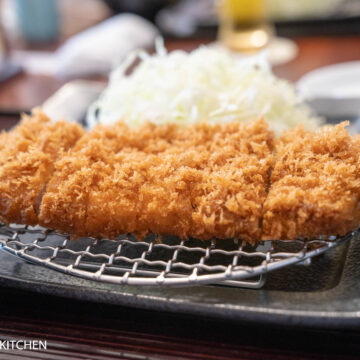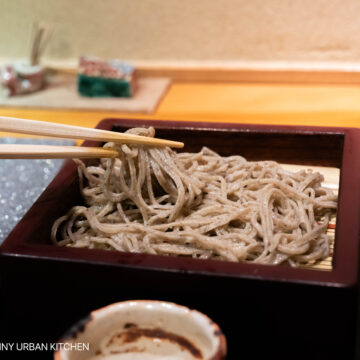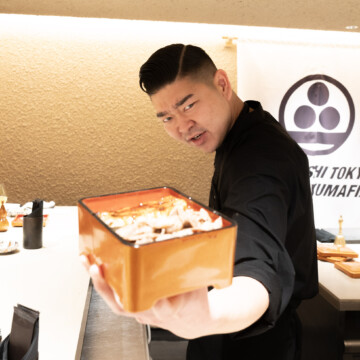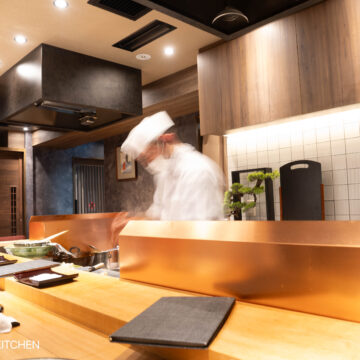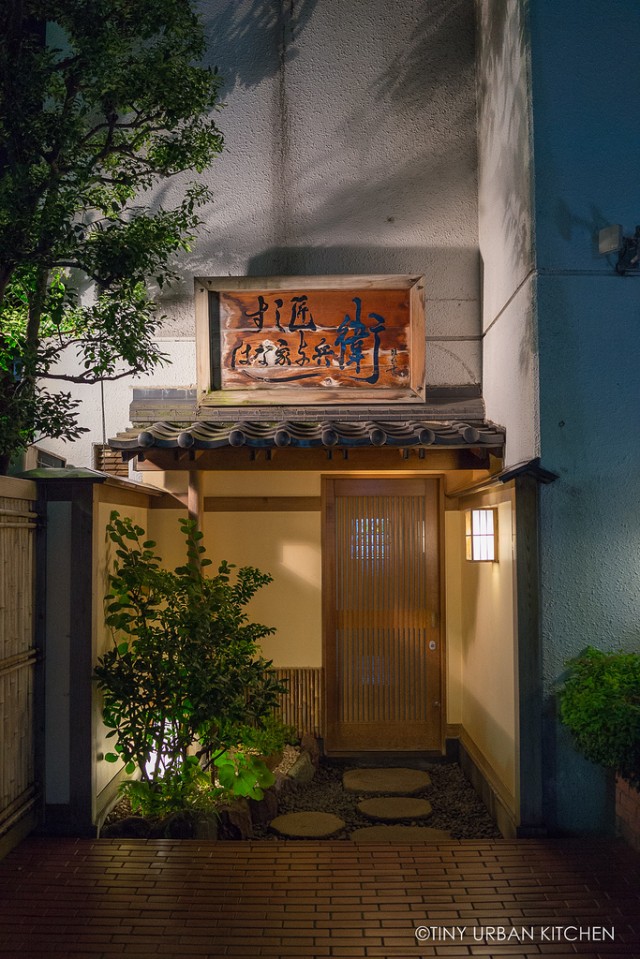
This is the ninth post in the Tokyo - Kyoto - Osaka series. Other posts in this series include the intro post: Tokyo, Kyoto, and Osaka, Matsugen (soba), Sushi Iwa, Ramen Honda (Tokyo Ramen Street), Ryugin, Omen (udon), Shouraian (tofu), Dotonbori in Osaka (street food), and Taian (3-star Michelin).
How do you cap off an intense week of traveling throughout Tokyo, Kyoto, and Osaka, having dined at so many incredible places? After all the exotic, unusual, and variety of food in Japan, we decided on going back to what we loved most for our last meal: sushi.We'd already had pretty world class sushi up to this point: 1-star Michelin Sushi Iwa early in the week and 3-star Michelin legendary Sushi Mizutani later on in the week. Sushi Sho was the first non-Michelin rated restaurant we were visiting.

According to an article in CNN Travel, Chef Keiji Nakazawa "kicked out the Michelin reviewers" because they "didn't know how to appreciate sushi." When asked personally by blogger Aun Koh from Chubby Hubby, Chef Nakazawa explained that he never kicked anyone out.
A Michelin reviewer had instead approached him about possibly including Sushi Sho in their guide. As the reviewer returned to eat at (and presumably review) his restaurant several more times, Chef Nakazawa became more and more unhappy with this man, concluding that he knew absolutely nothing about sushi.
He told the reviewer exactly what he thought.
And then his restaurant never appeared in any sort of Michelin guide.
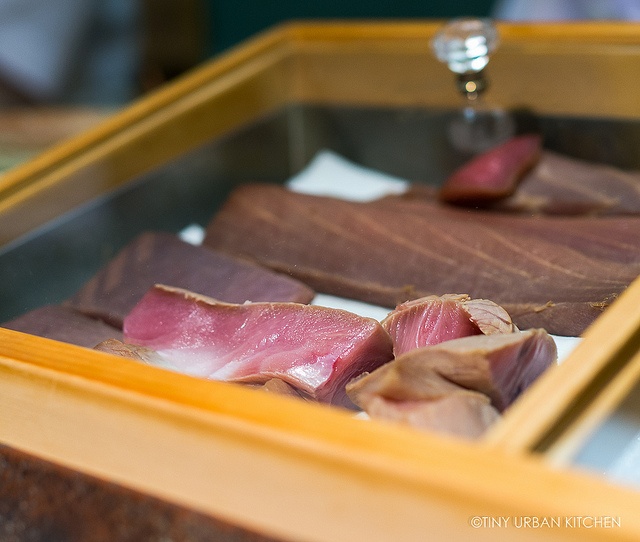
10-day aged maguro
Despite the fact that Chef Keiji Nakazawa may not be known as much internationally, this does not mean he's not loved and revered in Japan.
Sushi Sho regularly shows up on top sushi lists in Japan. Chef Nakazawa competed against Chef Morimoto in Iron Chef Japan (though Morimoto did win with his fusion style over Nakazawa's traditional Edo style). He has trained many proteges who have gone on to open very, very successful restaurants of their own, many of which are named after him (e.g., Sushi Sho Masa, Sushi Sho Shingo and Sushi Sho Saito).
We arrived at Sushi Sho at 9PM on our last night in Tokyo (the only time that was available to us). Inside, the ambiance was boisterous and loud. Many of the guests were in the middle or end of their meal, already on their nth glass of sake and looking quite pleased with everything.
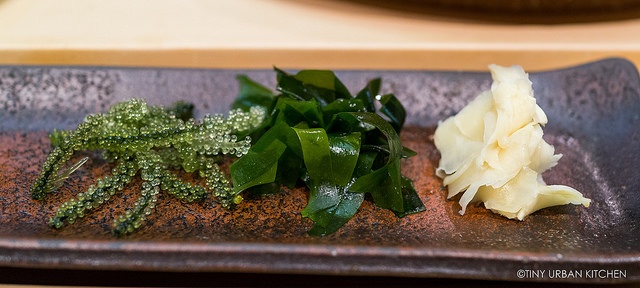
We settled into four seats at the end of the circular counter. They handed us the most interesting assortment of seaweed: umibodo, wakame, and ginger.
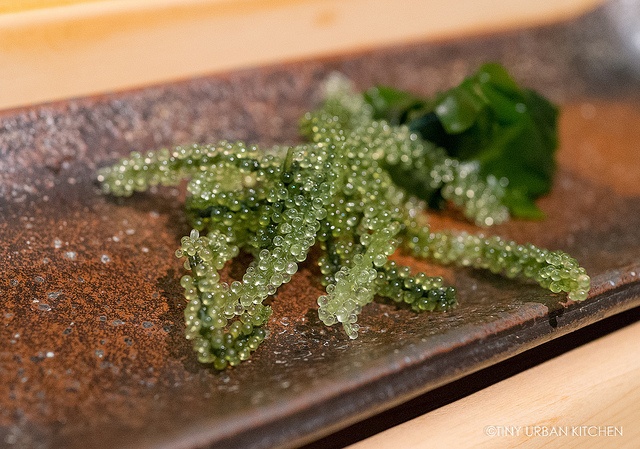
Also known as sea grapes or green caviar, Umibodo comes from Okinawa and pops like caviar when you bite into it. I found it delightful, and savored each "strand" of tiny little pearls as I bit into them.
Pop pop pop pop pop.
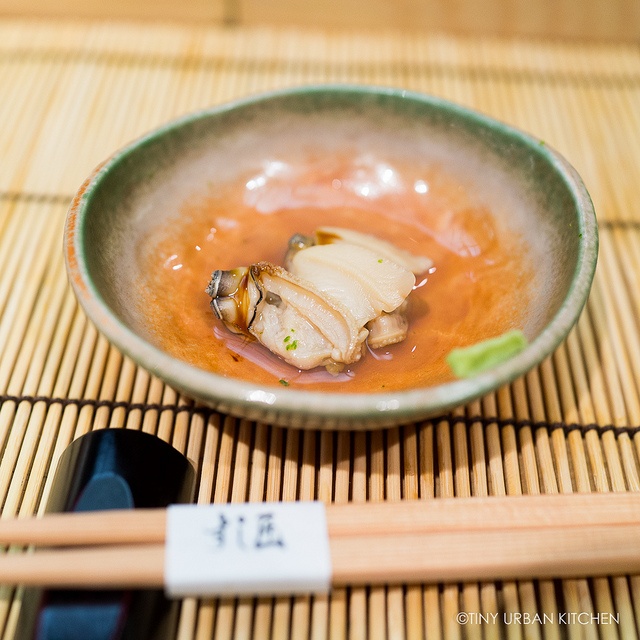 We began with some lightly cooked Hamaguri (clam), served with just a small dollop of wasabi on the side.
We began with some lightly cooked Hamaguri (clam), served with just a small dollop of wasabi on the side.
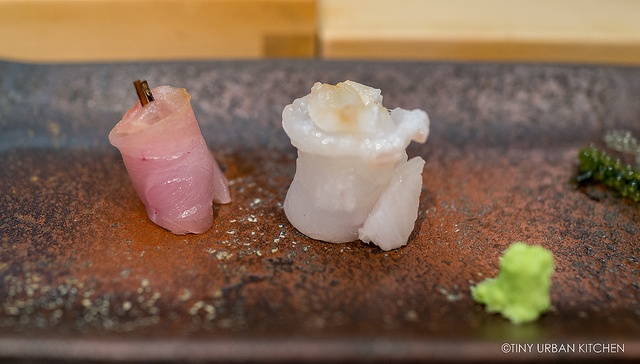 Next came two rolled up pieces of sashimi: Kinmedai (Golden Eye Snapper) and Ara (Cod).
Next came two rolled up pieces of sashimi: Kinmedai (Golden Eye Snapper) and Ara (Cod).
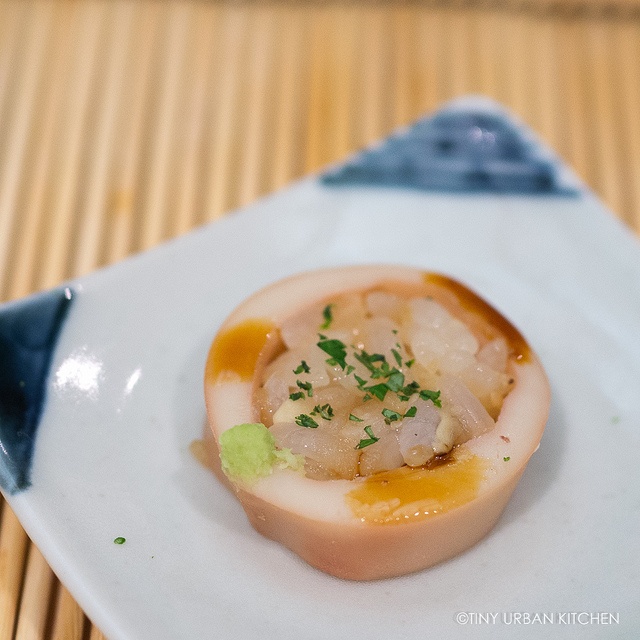 Chef Nakazawa does a mix of traditional nigiri sushi, sashimi, and creative combinations like this ika (cooked squid) which was filled with rice inside, a tiny bit of soy sauce, and a delicate dab of wasabi. The squid was a bit chewier than the ethereal squid we've had at 3-Star Michelin places like Mizutani and Jiro (maybe because they massage the squid for a long time?). Nevertheless, the flavors were still excellent.
Chef Nakazawa does a mix of traditional nigiri sushi, sashimi, and creative combinations like this ika (cooked squid) which was filled with rice inside, a tiny bit of soy sauce, and a delicate dab of wasabi. The squid was a bit chewier than the ethereal squid we've had at 3-Star Michelin places like Mizutani and Jiro (maybe because they massage the squid for a long time?). Nevertheless, the flavors were still excellent.
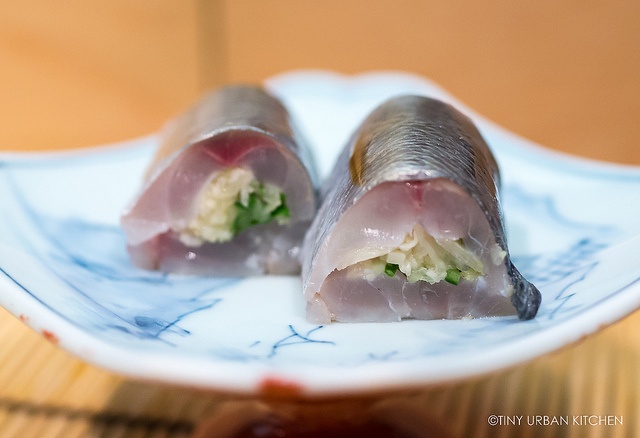 Aji, or Horse Mackerel, was served filled with finely sliced raw ginger, cucumber, and shiso. I love the pop of the herb, which offset this fattier fish nicely.
Aji, or Horse Mackerel, was served filled with finely sliced raw ginger, cucumber, and shiso. I love the pop of the herb, which offset this fattier fish nicely.
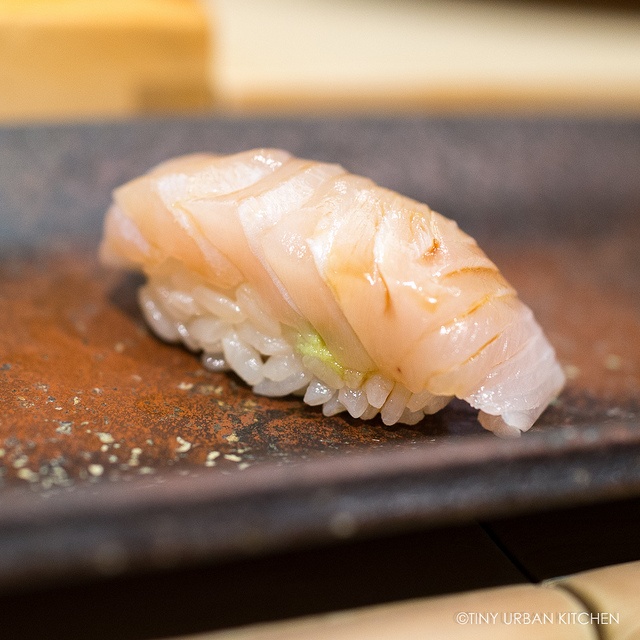 Sagoshii (Baby Spanish Mackerel) nigiri.
Sagoshii (Baby Spanish Mackerel) nigiri.
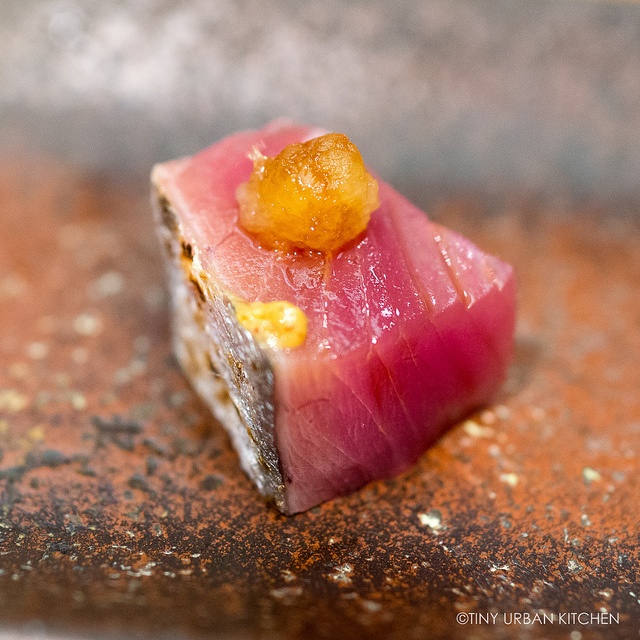 Katsuo (Skipjack Tuna) is the same type of fish used in making bonito flakes. I have often seen it slightly seared at restaurants, a preparation that I love. Here, the skin seems just barely seared and it's topped with a tiny dollop of onion and Japanese mustard. It's definitely a milder preparation, not as salty or smoky as the grilled ones (which I still prefer).
Katsuo (Skipjack Tuna) is the same type of fish used in making bonito flakes. I have often seen it slightly seared at restaurants, a preparation that I love. Here, the skin seems just barely seared and it's topped with a tiny dollop of onion and Japanese mustard. It's definitely a milder preparation, not as salty or smoky as the grilled ones (which I still prefer).
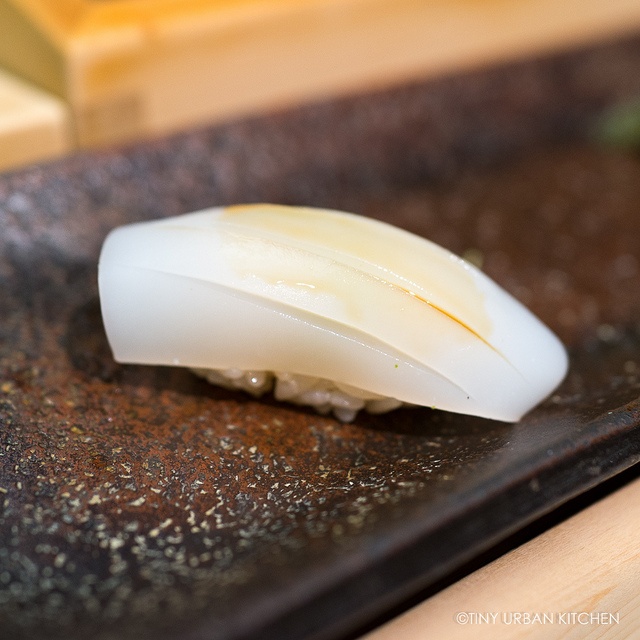 The simple Ika (squid), is good, though less tender than the best ones I've had.
The simple Ika (squid), is good, though less tender than the best ones I've had.
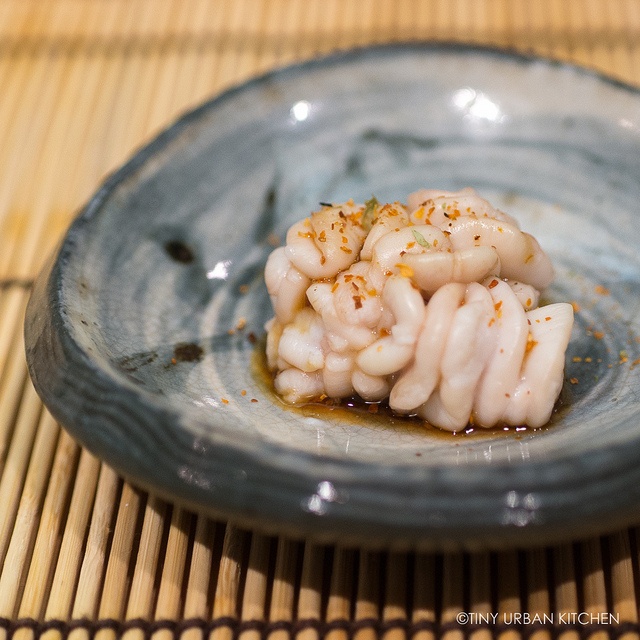 It seems like every Japanese sushi chef I've ever run into translates Shirako into "monkfish liver." Either they are all getting their translations from the wrong book, or it's just a euphemism that they prefer to use because the truth would gross people out a bit too much.
It seems like every Japanese sushi chef I've ever run into translates Shirako into "monkfish liver." Either they are all getting their translations from the wrong book, or it's just a euphemism that they prefer to use because the truth would gross people out a bit too much.
In fact, shirako is "milt", or sperm sac. The first time I had it in Japan (in a 2-star Michelin sushi restaurant, no less), I was also told it was "monkfish liver." In fact, I announced it proudly on the blog. It wasn't until a kind commenter told me the truth (at least a month later) that I realized what I had eaten.
This time, I knew, though they still told us it was monkfish liver.
The exotic brain-like organ was hot, creamy, and mild. If you didn't know what it was, you'd probably think it was quite delicate and tasty. Unfortunately, psychology is a strong deterrent. One of my male friends who was dining with us said "that is a little too weird for me."
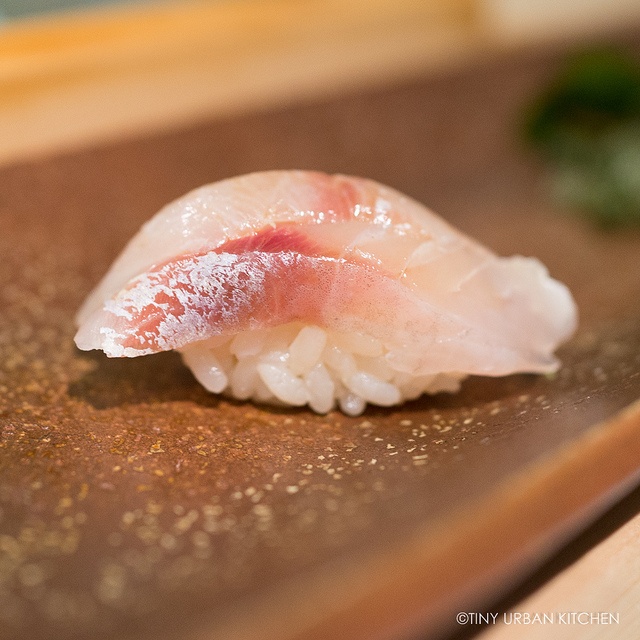 Kamasu, or Barracuda, reminded me of hamachi (yellowtail), but softer and a bit saltier. I enjoyed this piece quite a bit.
Kamasu, or Barracuda, reminded me of hamachi (yellowtail), but softer and a bit saltier. I enjoyed this piece quite a bit. 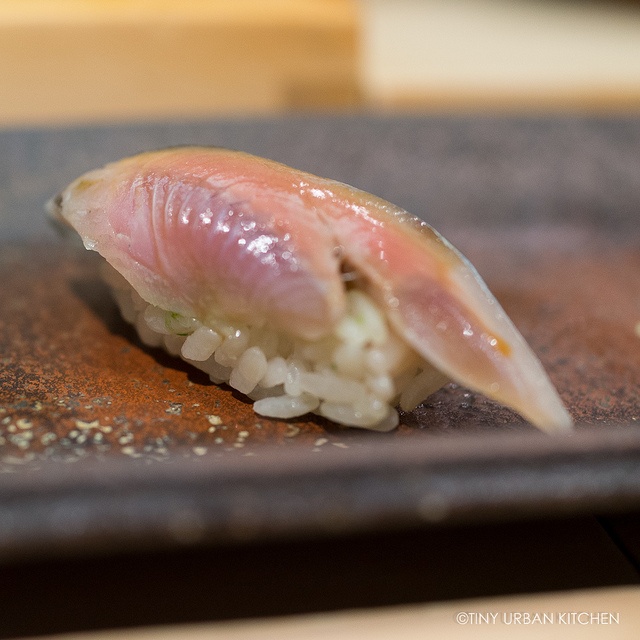
Samma, or Mackerel Pike, was super soft, very fatty, and had a strong, intense, mackerel-like "fishiness" (for lack of a better word).
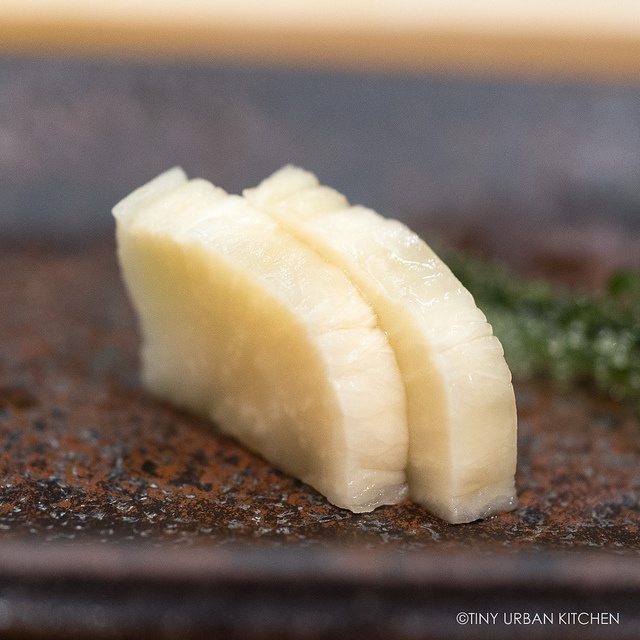 At this point in the meal, they gave us a few slices of pickled radish to cleanse our palates.
At this point in the meal, they gave us a few slices of pickled radish to cleanse our palates.
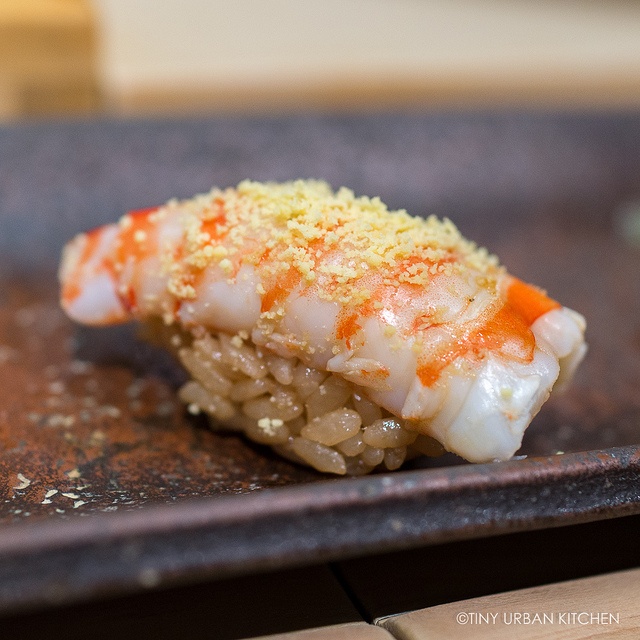
Chef Nakazawa uses several different types of rice for different types of seafood. For example, in this next unusual style of Ebi (Shrimp), our rice was brown due to the use of a special type of dark vinegar. The shrimp was topped with an interesting egg and vinegar powder.
Although the flavor was interesting, the quality and texture of the shrimp was only average, not nearly as good as ones we've had at other sushi place, which have been sweeter and juicier with a texture that really "pops" when you bite into it. I found this one to be only OK.
 You never see freshwater eel, or Unagi, in a restaurant that strictly serves Edo style sushi. This is because Edo purists will only serve seafood that comes from Tokyo Bay. As a result, you will only see sea eel, or Anago, at these types of restaurants. The Grilled Anago we had was pre-dressed for us with a tiny bit of wasabi and soy sauce. It was good, on par with most places we've visited.
You never see freshwater eel, or Unagi, in a restaurant that strictly serves Edo style sushi. This is because Edo purists will only serve seafood that comes from Tokyo Bay. As a result, you will only see sea eel, or Anago, at these types of restaurants. The Grilled Anago we had was pre-dressed for us with a tiny bit of wasabi and soy sauce. It was good, on par with most places we've visited.
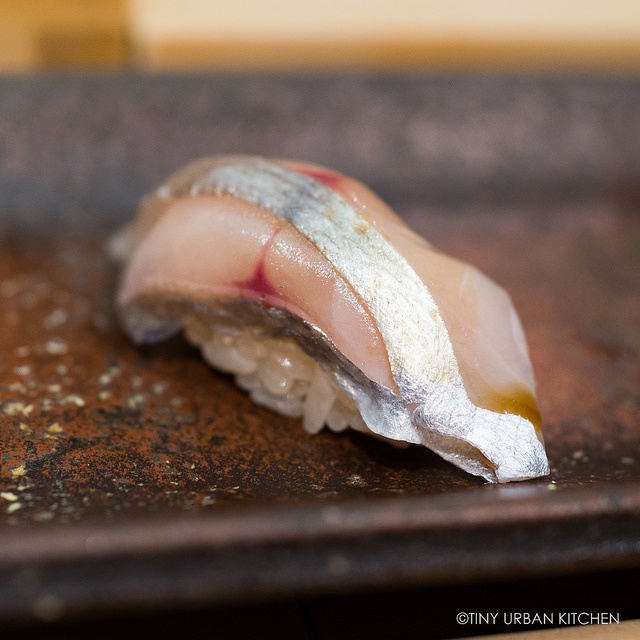 Kombu (seaweed)-cured Ebodai, or butterfish.
Kombu (seaweed)-cured Ebodai, or butterfish.
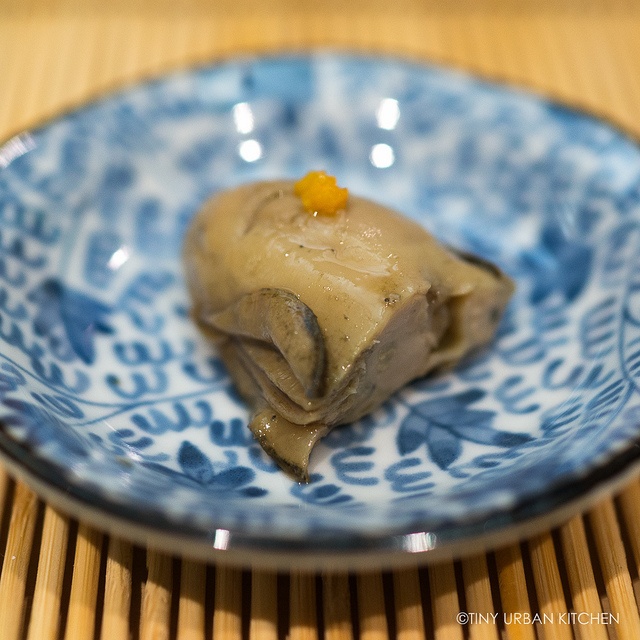 This Hokkaido Oyster was extremely flavorful, boiled in soy sauce, sugar, yuzu, and several more ingredients that I just couldn't catch while he was explaining it to us.
This Hokkaido Oyster was extremely flavorful, boiled in soy sauce, sugar, yuzu, and several more ingredients that I just couldn't catch while he was explaining it to us.
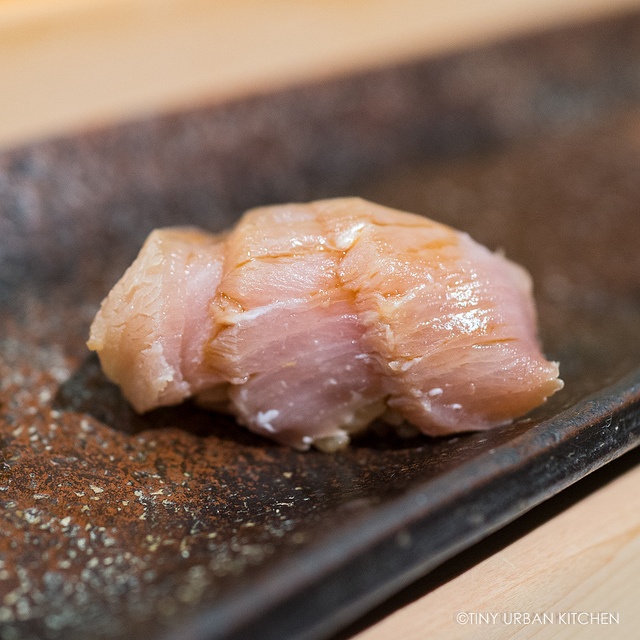 1 Chef Nakazawa is well known for how he ages various types of fish. He believes that fresh fish is not always necessarily the best. Instead, sometimes aging fish can intensify and bring out the flavors. In this case, we had a 1-week aged Hamachi (yellowtail) served with rice that was mixed with brown vinegar. The aged fish definitely tasted different. It was softer, more mushy in texture than fresh fish. It definitely tasted fatty and had a nice intense flavor.
1 Chef Nakazawa is well known for how he ages various types of fish. He believes that fresh fish is not always necessarily the best. Instead, sometimes aging fish can intensify and bring out the flavors. In this case, we had a 1-week aged Hamachi (yellowtail) served with rice that was mixed with brown vinegar. The aged fish definitely tasted different. It was softer, more mushy in texture than fresh fish. It definitely tasted fatty and had a nice intense flavor.
I guess I forgot to photograph this next course, but we also had two pieces of Mackerel, one with scallions and ginger pesto and another one flavored with just Japanese mustard. The mackerel was soft, fatty, and flavorful - not a hint of that fishy flavor you sometimes associated with these fattier fish. Along with that we enjoyed some Grilled Snapper Skin (also not pictured).
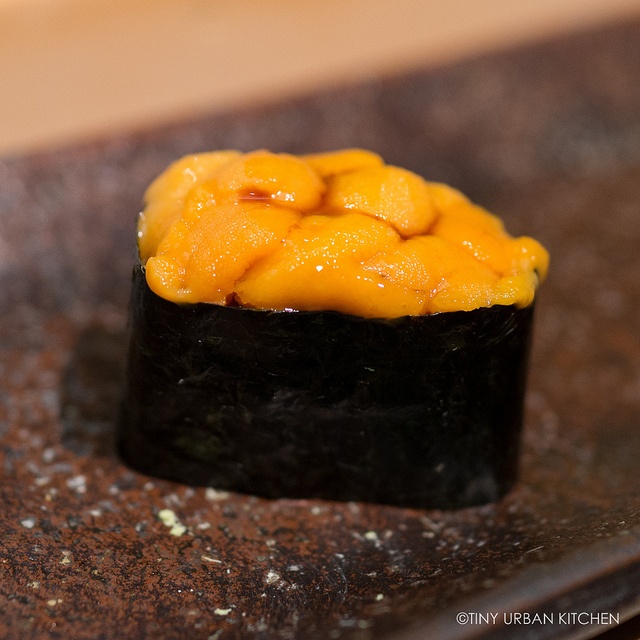 The Uni (Sea Urchin) was from Hokkaido. The quality of the uni was excellent: the flavors were clean and sweet, without any hint of stink. The seaweed itself was a bit soggier than I would have liked, and the uni was colder than I expected. Overall, it was still a very enjoyable piece of sushi despite the minor flaws.
The Uni (Sea Urchin) was from Hokkaido. The quality of the uni was excellent: the flavors were clean and sweet, without any hint of stink. The seaweed itself was a bit soggier than I would have liked, and the uni was colder than I expected. Overall, it was still a very enjoyable piece of sushi despite the minor flaws.
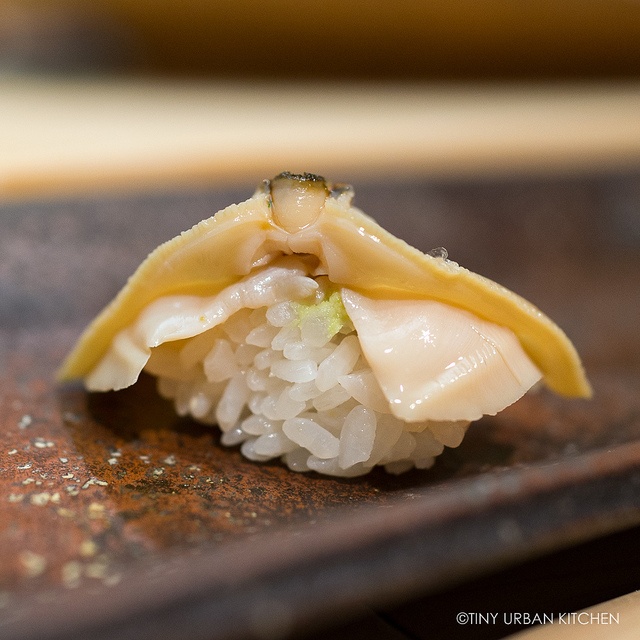 Hamaguri (Clam) was simply prepared with just a tiny bit of wasabi. This piece was perfectly seasoned (good salt level), very fresh, and overall very enjoyable.
Hamaguri (Clam) was simply prepared with just a tiny bit of wasabi. This piece was perfectly seasoned (good salt level), very fresh, and overall very enjoyable.
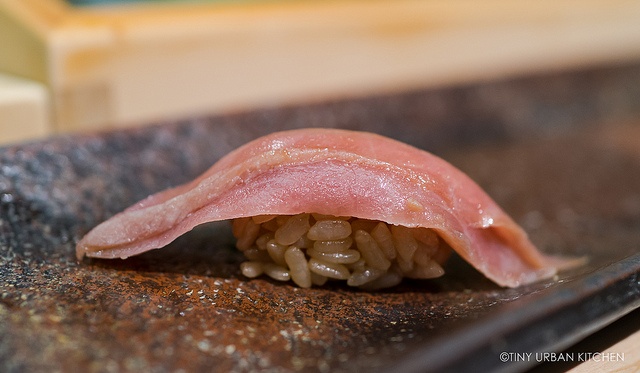 We also tried 10-day aged Maguro (Tuna), which again was softer in texture than fresh tuna. It was also saltier and seemed to have the texture of a fattier piece even though this piece had very little fat.
We also tried 10-day aged Maguro (Tuna), which again was softer in texture than fresh tuna. It was also saltier and seemed to have the texture of a fattier piece even though this piece had very little fat.
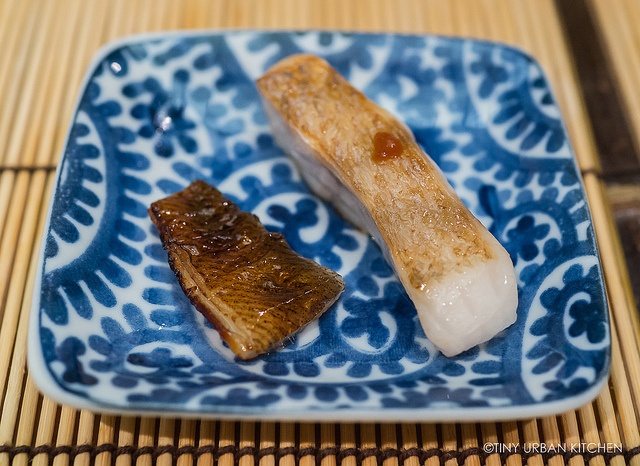 On the left we enjoyed Mehikari, a deep sea fish called Round Green Eyes. It was served with a crispy skin. On the right we had a slice of grilled Nodoguro (Rosy Sea Bass). Both were excellent.
On the left we enjoyed Mehikari, a deep sea fish called Round Green Eyes. It was served with a crispy skin. On the right we had a slice of grilled Nodoguro (Rosy Sea Bass). Both were excellent.
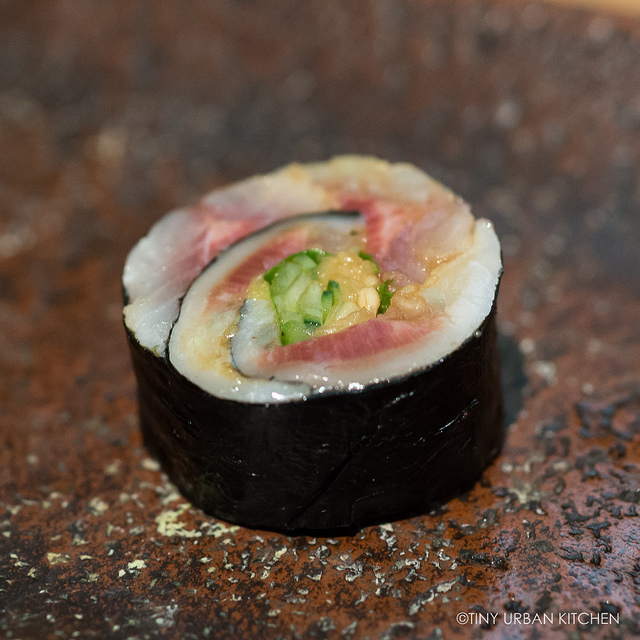 We then each enjoyed a single Sardine Maki beautifully rolled with cucumbers, ginger, and a slightly sweet soy sauce. The fish itself was quite fatty, and I was slightly surprised at the presence of a few tiny bones in my piece. Overall, I found it to be decent, but it wasn't a favorite.
We then each enjoyed a single Sardine Maki beautifully rolled with cucumbers, ginger, and a slightly sweet soy sauce. The fish itself was quite fatty, and I was slightly surprised at the presence of a few tiny bones in my piece. Overall, I found it to be decent, but it wasn't a favorite.
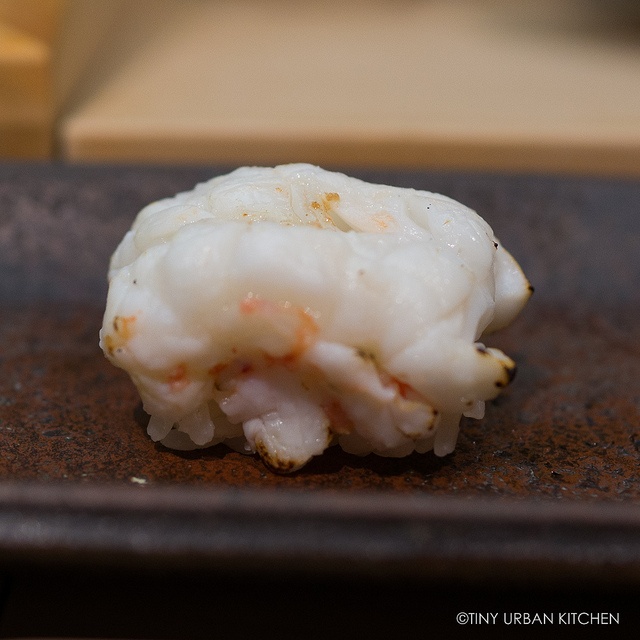
We then had Ebi (shrimp), which was sweet, super fresh, and warm. The texture was juicy and "popped" the way super fresh shrimp pops. It had balanced flavors and overall was excellent.
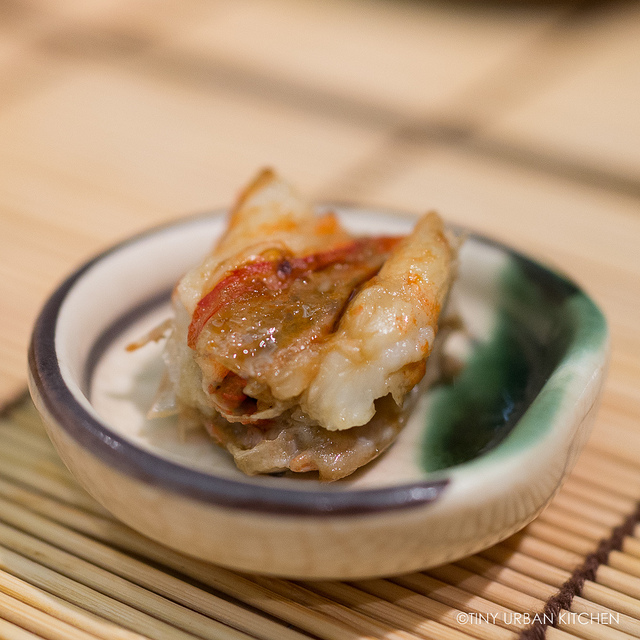 They also served us the head of the shrimp separately, which was crunchy, mushy, and warm all at the same time. The psychology of what I was eating got the best of me, and I did not enjoy that bite much at all. I was too grossed out, unfortunately.
They also served us the head of the shrimp separately, which was crunchy, mushy, and warm all at the same time. The psychology of what I was eating got the best of me, and I did not enjoy that bite much at all. I was too grossed out, unfortunately.
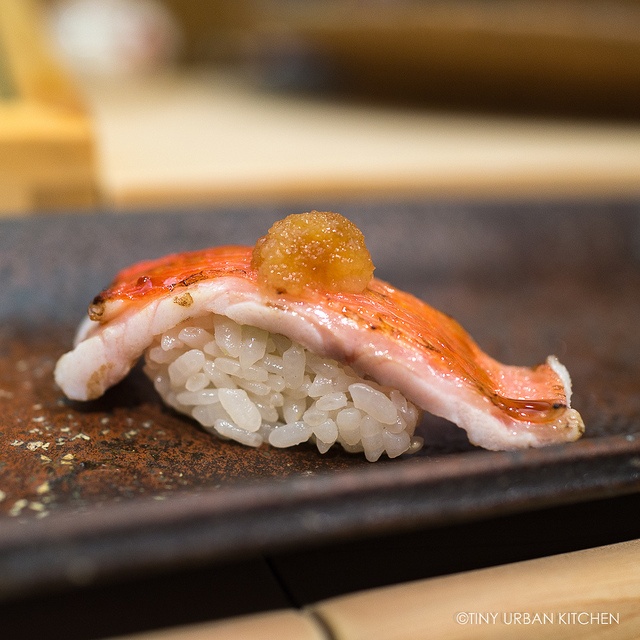
Our last bite was Kinmedai (Golden Eye Snapper), the same piece we had enjoyed as sashimi at the beginning of our meal. Here, just lightly grilled, it was slightly smoky yet super soft and fatty, reminding me of fattier belly pieces. I loved how the bitter daikon purée on top balanced out the smoky, fatty fish. We loved this bite.
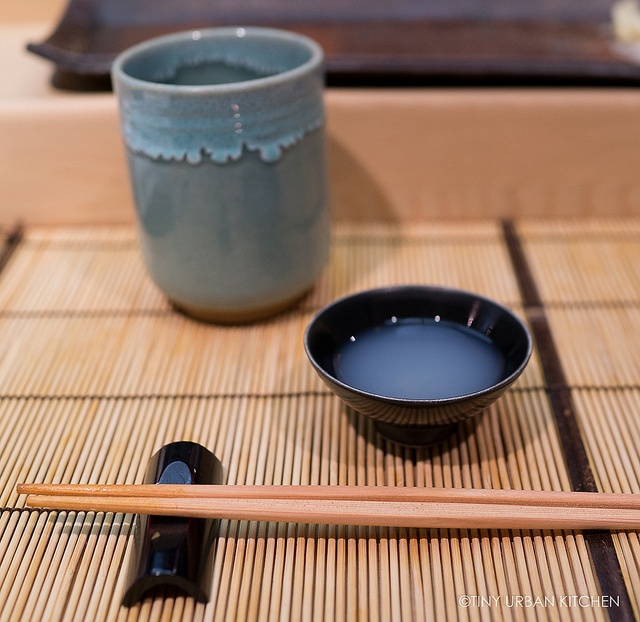 And finally, we had a cleansing bowl of Shijimi, or clam soup. The flavors of this barely milky broth were fantastic. It was simple, clean, yet richly full of clam umami flavor. It was a lovely way to close out the meal.
And finally, we had a cleansing bowl of Shijimi, or clam soup. The flavors of this barely milky broth were fantastic. It was simple, clean, yet richly full of clam umami flavor. It was a lovely way to close out the meal.
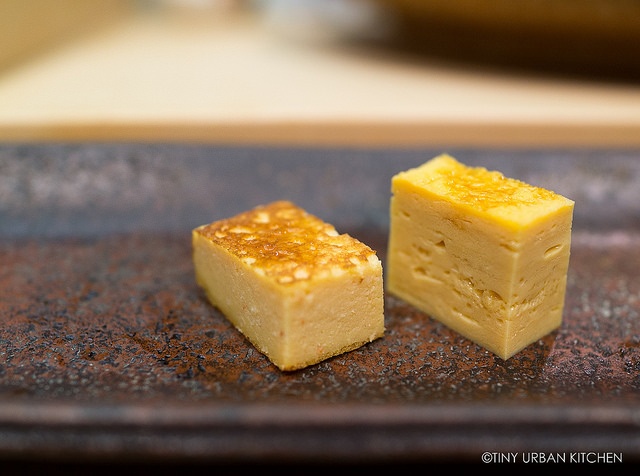 You can't finish a sushi tasting without Tamago, or Japanese egg omelet. We tried two different types here: the one on the left was a shrimp flavored tamago; the one on the right, a scalloped flavored tamago. These were mild and had decent texture. The flavors made it interesting, though I believe most sushi chefs use a variety of trade secret seafood-based ingredients in their tamago.
You can't finish a sushi tasting without Tamago, or Japanese egg omelet. We tried two different types here: the one on the left was a shrimp flavored tamago; the one on the right, a scalloped flavored tamago. These were mild and had decent texture. The flavors made it interesting, though I believe most sushi chefs use a variety of trade secret seafood-based ingredients in their tamago.
These were good, but nothing close to my all-time favorite transcendent tamago at Mizutani.
We were super full, yet it was a lovely way to enjoy our last night in Tokyo.
General Thoughts and Tips
Sushi Sho was definitely a fun experience and we had lots of excellent sushi there. The atmosphere is boisterous and casual, and the staff is friendly. Perhaps due to the recent increased attention after a couple food blogs "outed" this place, they now do not allow photography of their staff (though photography of sushi is still OK).
I don't think Sushi Sho is quite on par with the top sushi places in Tokyo, but it's still an excellent experience and costs a bit less than some of the other 3-Star Michelin sushi places. Our total bill, all-in, was just shy of $200 USD (20,000 yen) per person. Expect to pay closer to $300 per person at some of the other top sushi places in Tokyo. My favorite parts of this meal would be the fun "sea grapes" green caviar, the grilled Kinmedai, and that beautiful clam soup.
I booked my dinner for a party of four about a month in advance. I had my hotel concierge call for me. I've heard they only speak Japanese, so that is definitely the easiest way to get a reservation. Because the restaurant only has 10 counter seats, it's crucial to make reservations in advance, especially if you have a larger party. Because they shop for your ingredients that morning (at the fish market!), you cannot cancel same-day. The penalty is 20,000 yen a person for same-day cancellations.
Thanks to Cindy of Chubby Chinese Girl for first telling me about this place!
All Rights Reserved

